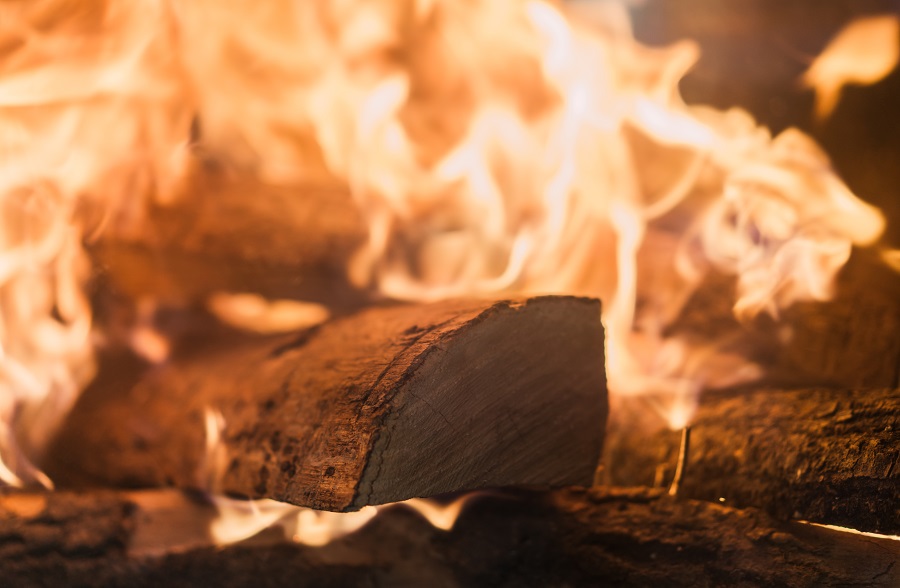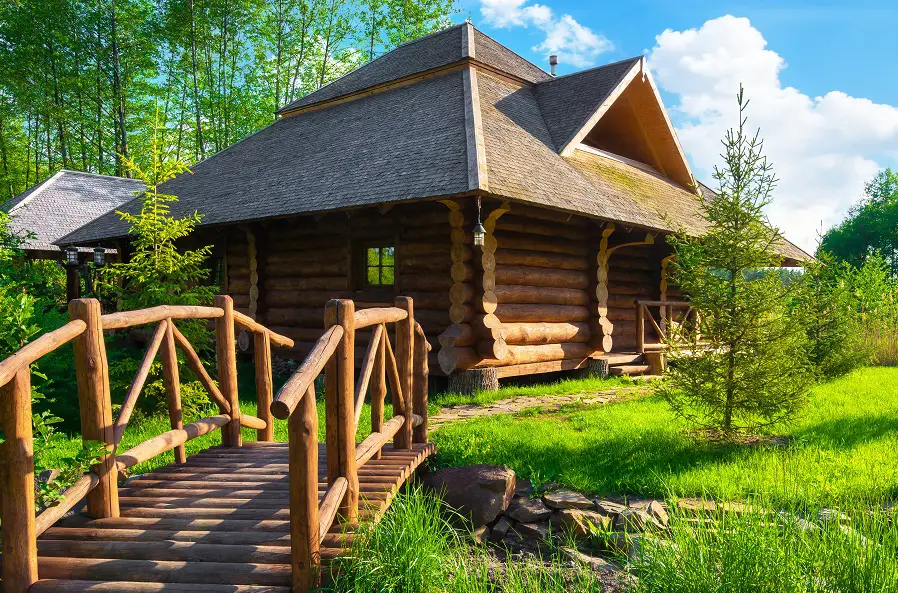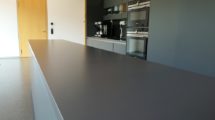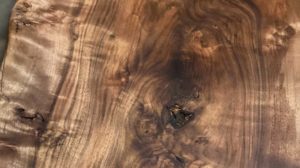Wood behaves interestingly when it comes into contact with a heat source. If you put an open flame under a pile of dry wood, it will ignite and burn, releasing heat. If, however, we stir with a wooden spoon in a pot where something is boiling or frying in hot oil, the spoon's tail doesn't heat up, leaving us to get on with our cooking. Both of these manifestations are related to the thermal properties of wood. These properties are responsible for wood's ability to be a good natural thermal insulator, and for its increasingly popular use as an energy source.

What are the thermal properties of wood
The thermal properties of wood are heat capacity, thermal conductivity, specific heat and thermal diffusivity.
Calorific value is the amount of heat given off by one kilogram of wood during combustion. Wood is a water-containing material and its heat output depends on the water content, and the drier the wood, the higher the heat output. This is because some of the heat released is used to evaporate the water inside. Anhydrous, completely dry wood gives the maximum heat value. But the real value is much lower because wood for burning has a moisture content that is sometimes higher than 12-14%. Find out more about the calorific value of different species of wood here.
Thermal conductivity is the property of wood to conduct heat. It is expressed by the thermal conductivity coefficient λ (lambda) and represents the amount of heat that passes through a flat wall of 1 m² surface area and 1 m thickness for one hour at a temperature difference between the two sides of the wall of 1°C. In short, the λ coefficient tells us how good an insulator wood is. Its value depends on the species, density, orientation to the central axis, humidity. How it varies according to these elements, we'll see in a moment.
Specific heat is the amount of heat required to raise the temperature of 1 kg of wood by 1°C. It increases with increasing temperature and humidity. The specific heat of wood is much higher than that of metal, i.e. for the same amount of heat received, the temperature of wood rises much less than that of metal. That's why we have no problems using the wooden spoon to stir in food, whereas we have to abandon the metal one quite quickly because it gets hot.
Thermal diffusivity is the ability of the material to increase its temperature at a certain rate under the action of temperature. The coefficient of thermal diffusivity is basically the ratio of its ability to conduct heat to its ability to store heat. In wood, this ratio is much lower than in metal, which explains its insulating properties. The thermal diffusivity of wood depends on humidity, temperature and direction relative to the central axis. The coefficient of thermal diffusivity is important in the drying process of wood, hot gluing, steaming and pressing.

The more porous and less dense it is, the better thermal insulator it is
Wood is a natural thermal insulator due to its cellular structure. The voids inside are responsible for this property because they do not contribute to the transfer of heat from one side to the other. Therefore, the more porous and less dense wood is, the better insulator it is. Its insulating properties make it a good building material, with lower energy consumption where it is used. For example, the coefficient of thermal conductivity of construction timber is 0.13 W/mK, while for reinforced concrete and masonry it is 2.30 W/mK.
Insulating capacities depend not only on wood density but also by species, moisture content, direction relative to the central axis and temperature. The higher the moisture content, the higher the conductivity and the less insulating the wood. This is because water fills the gaps, thus helping to transfer heat. In the longitudinal direction, the conductivity of wood is 2-3 times higher than in the radial and tangential directions. Being along the grain, heat is more easily conducted, as wood is less insulating in this direction. Conductivity also increases with increasing temperature, when expansion in the radial and tangential direction is greater. Due to this expansion, the amount of heat transferred in these directions is greater, which leads to a decrease in insulating properties.
As I said, the insulating properties of wood also depend on the species. Different density, cell structure make some species more suitable than others for flooring, cladding or even house construction. Studying these properties we find that Canadian poplar (0.090 W/mK) and fir (0.110 W/mK) have much better insulating properties than oak (0.197 W/mK) or plum (0.179 W/mK). Find out more here a very interesting study on more than 30 wood species on their thermal insulation properties.

Why log houses are the best example of wood's insulating properties
The most eloquent example of the insulating properties of wood are houses in bușteni. They are constructed entirely of unprocessed softwood logs, with no other insulation layers. The only insulating element used is between the logs and contributes in particular to a better connection between the logs. If it's a well-made house and the wood has been dried beforehand so that it's not over-worked and cracks don't appear between the logs, the house keeps warm in winter and cool in summer, and this is felt as soon as you enter the house.
Thermal insulation of the house is provided only by softwood logs which, due to their low density, have a lower heat transfer coefficient. The heat storage capacity is high so the wood stores heat outside during the day and releases it inside at night. If the wood has been left to dry before construction and after construction the house has been left to settle, the moisture in the wood will be low and heat transfer will be slow.
Even though wood is a good insulating material, it is no more effective than insulation materials
With the exception of log houses, where the thickness of the log is sufficient to provide the necessary thermal insulation, at houses on wooden structure insulating material is needed. The insulating properties of wood are not sufficient and additional coating is needed to achieve an energy efficient home. The advantage of these houses is that much of the insulation is put into the walls, resulting in a well insulated house with a larger floor area.
The insulating properties of wood are also used to make highly effective insulation materials. Wood fibre mattresses and panels not only have very good insulating properties (0.038 W/mK), the advantage of being natural brings obvious additional benefits.
I hope you find the information below interesting and useful. As usual, additions are welcome. And if you have any questions or queries, please leave them in the space below. I'm sure I'll get back to you.





























Hello, I want to build a small house on wooden structure. Is it ok if I put 5 cm polystyrene on the outside? My question is, does it not rot? because the inside will be covered with plasterboard and the outside with 5 cm polystyrene. On the inside I have 1.2 cm plasterboard, in the middle 10 cm polystyrene and outside another layer of 5 cm polystyrene. Thank you!
Hello!
Very rarely have I seen builders of wooden houses recommend insulating the exterior walls with polystyrene because of the very low fire resistance, the speed at which flames spread and the noxious fumes released. Below is a comparative fire test between polystyrene, basalt wool and wood fibre boards.
To answer your question, expanded polystyrene should not cause rotting problems because it is a porous material with good vapour permeability. There is fire retardant polystyrene with better fire resistance and graphite which also has improved thermal coefficient. If you still want to use polystyrene, it may be better to choose the safer options.
Below is an article with more information about polystyrene.
Good luck!
https://revistadinlemn.ro/2020/08/03/test-comparativ-de-rezistenta-la-foc-polistiren-expandat-vata-minerala-bazaltica-panouri-din-fibra-de-lemn-gutex/
https://revistadinlemn.ro/2019/08/29/materiale-pentru-izolarea-termica-a-casei-avantaje-si-dezavantaje-certificatul-energetic/